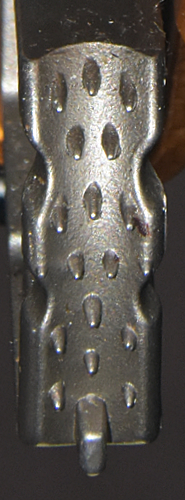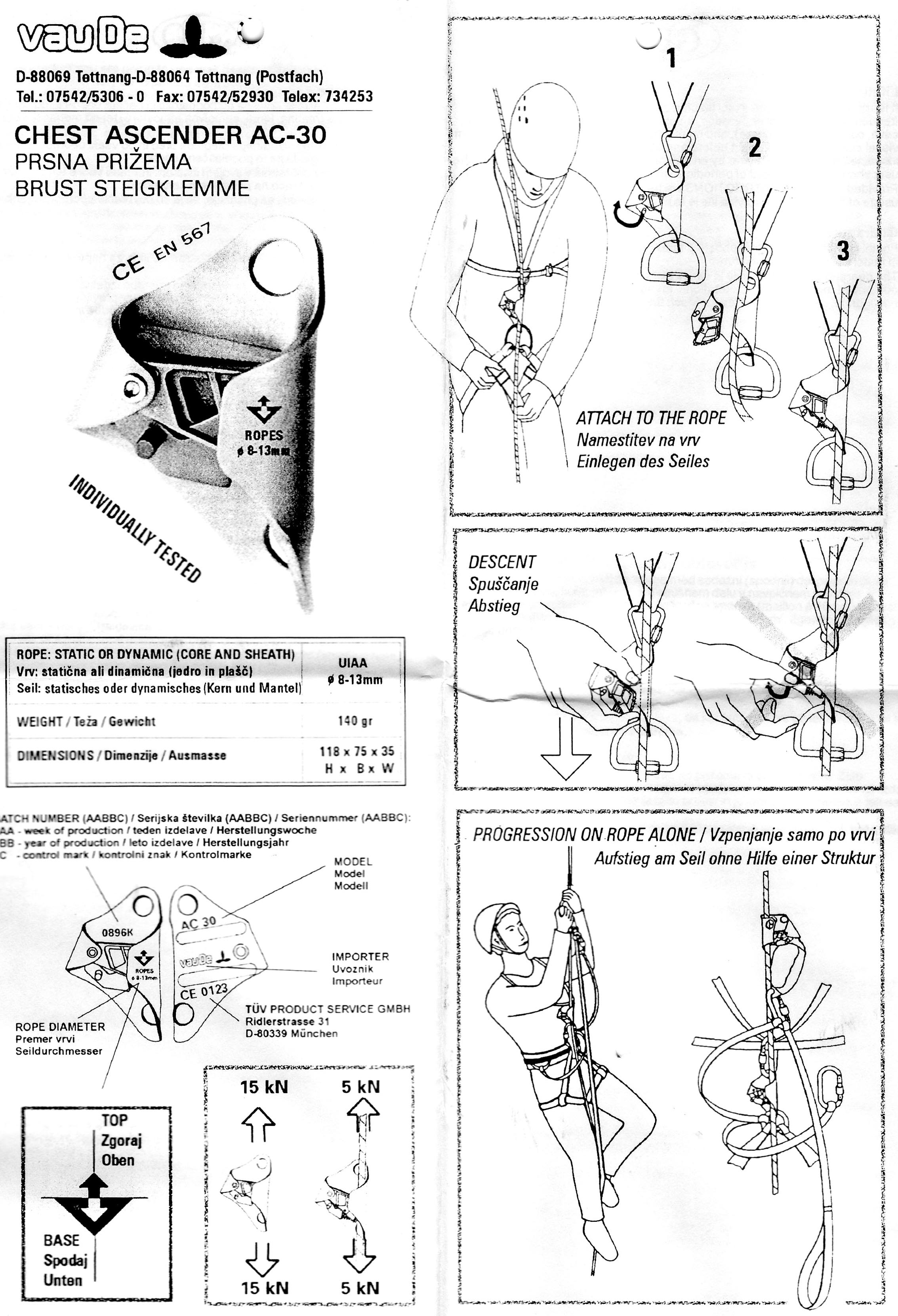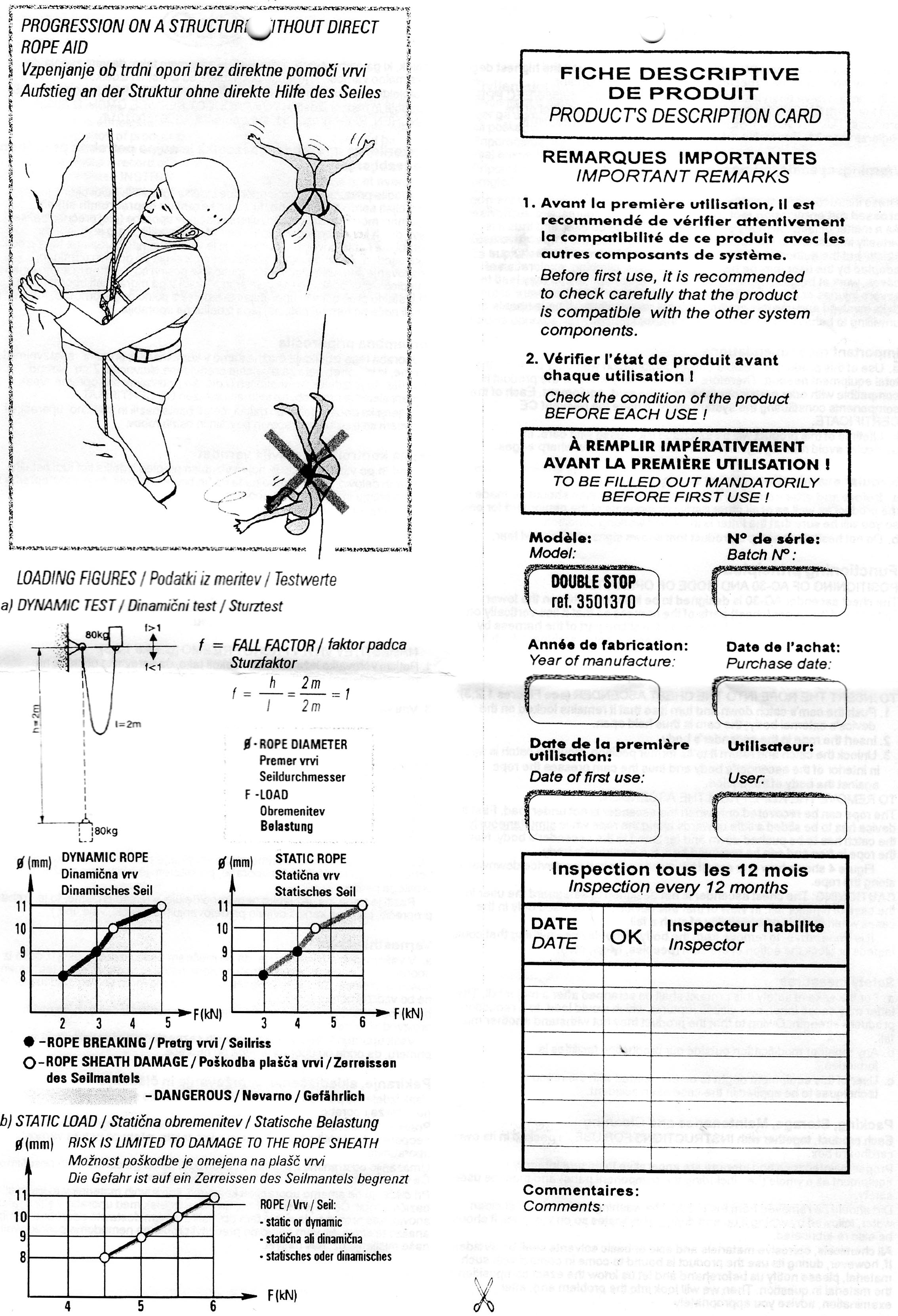Technical Details
I acquired this pair of ascenders from Inner Mountain Outfitters
in August 1999.
 The shell is a tall sub-triangular shaped stamping made from
4.2 mm. aluminum alloy sheet metal. The stamping has one reinforcing
rib behind the cam. The ascender is left-handed, as are similar
chest ascenders made by others. A rope channel is formed in the
right side and a smaller cam channel lies to the left. A hole
drilled through both sides of the cam channel accepts a 5 mm.
semi-tubular rivet. The cam and cam spring are mounted on this rivet.
A 17 mm. sling attachment hole is punched below the cam and a
15.0 mm. hole is punched above. Both holes are distorted by bends
formed during the shaping process. There is no cam stop.
The shell is a tall sub-triangular shaped stamping made from
4.2 mm. aluminum alloy sheet metal. The stamping has one reinforcing
rib behind the cam. The ascender is left-handed, as are similar
chest ascenders made by others. A rope channel is formed in the
right side and a smaller cam channel lies to the left. A hole
drilled through both sides of the cam channel accepts a 5 mm.
semi-tubular rivet. The cam and cam spring are mounted on this rivet.
A 17 mm. sling attachment hole is punched below the cam and a
15.0 mm. hole is punched above. Both holes are distorted by bends
formed during the shaping process. There is no cam stop.
The cam is a plated skeletonized steel casting. The cam has
number of small conical teeth, all of which have their axes approximately
in line with the corresponding radius from the cam pivot. The
tooth pattern is (3.2)^2(1.2)^2(B) pattern, where "B"
indicates a bar. There are two notches on each side of the cam
face, presumable for mud relief. Unlike some other ascenders,
the inner cam face radius appears to be constant. A spring-loaded
manual safety bar is mounted on the bottom of the cam with a small
semi-tubular rivet. The normal action of the spring holds the safety against
the cam. When the cam is opened, the shell interferes with the
safety bar, thus preventing opening the cam. If the safety bar
is moved away from the cam (opposing the spring), it will clear
the shell and the cam will open. At full open the safety can be
released and the spring will hold the safety against the back
of the shell. This provides a means of locking the cam open. A
pin on the safety assists in operating the safety mechanism.
The front of the ascender has a triangle and double arrow logo,
"ROPES" and "ø8-13 mm" stamped on the
rope channel. "AC-30" is stamped inside the shell, above
the cam. The rear is stamped with "4898-H," "ANTHRON,"
the triangle and double arrow logo, and "CE0123."
This is another well-made ascender. It performs much like the
Petzl Croll. All sharp edges have been
removed. The attachment points are simply holes in the shell,
and although rounded they should have been beveled more. They
can be acceptably rounded for webbing, but considering the proximity
of the attachment points to the main rope, I would recommend using
a small maillon for most rope attachments in order to reduce the
risk of sling abrasion.
The safety is awkward to use with one hand (like the Petzl
Croll). The cam is very well made. The notches don't seem
to provide much help in muddy conditions - but nobody else’s similar
ascender works well either. I'm not sure what purpose the bar
serves - several people have sent me emails telling me that the
bar keeps the cam from closing and touching the shell. I agree,
it does, but so what? Putting the ascender on rope does the same
thing. Initially I wondered if the bar would interfere with using
the ascender. It does not appear that it will, at least not on
9 mm. and larger ropes.
The Vaude AC-30 is essentially the same as the Anthron AC-30, being produced by the same company under a different name.

For far more content, use a larger monitor and a full-width window.
Hundreds of cell phone users complained and asked me to for a simpler, mobile friendly site. In particular, they wanted me to limit each page to a small number of pictures and minimize my use of text. This new site provides what they asked for.



